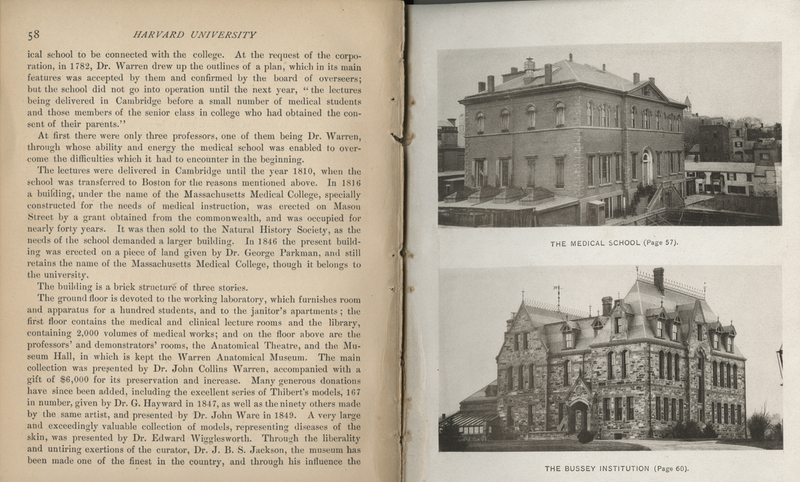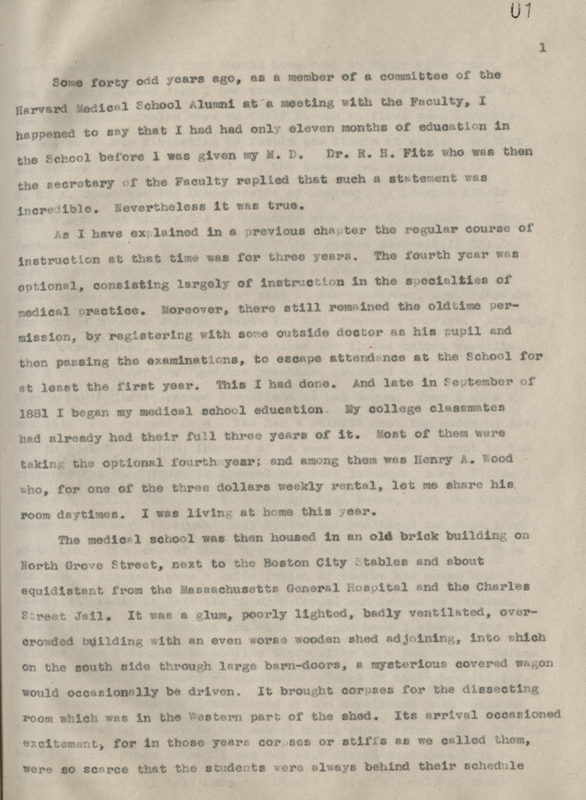Crowding after Reform
The size of the student body fluctuated wildly, dropping from over 300 in the late 1860s, down to 170 in the early 1870s. It recovered, however, and rose through the following decade until it finally exceeded 300 again in 1890. The Eliot reforms brought about some physical changes to the school as well. Laboratory facilities were essential to enhanced training of the students, and additional space at North Grove Street was designated for a new laboratory of physiology. But conditions were sadly overcrowded, and the Medical School faced another move.
This 19th century guidebook to Harvard University describes the current—and overcrowded—conditions of the Medical School on North Grove Street as well as some of the collections of the Warren Anatomical Museum. A building on Cambridge Street was used for additional laboratory space at this time, and a fund-raising campaign was underway to erect better accommodations.
At the time of his death, Dr. Alfred Worcester—a member of the Harvard College Class of 1878—was the University’s oldest living graduate. He was also an 1883 graduate of the Medical School. In the 1940s, Dr. Worcester composed his autobiographical memoirs, including this chapter on his experiences during the early 1880s. At that period, the required course of study was still only three years, and the school was housed in the “glum, poorly lighted, badly ventilated, over-crowded building” on North Grove Street. The students faced other difficulties too. Dr. Worcester wrote, “In those years corpses or stiffs as we called them, were so scarce that the students were always behind their schedule for dissecting. This they should have done in their first year, but now in their second year I had caught up with some of them. As in the daytime the tables were so fully in use by first year students we had to do our dissecting by feeble gas lights at night. As that was before corpses were embalmed, the stench was terrible.”


